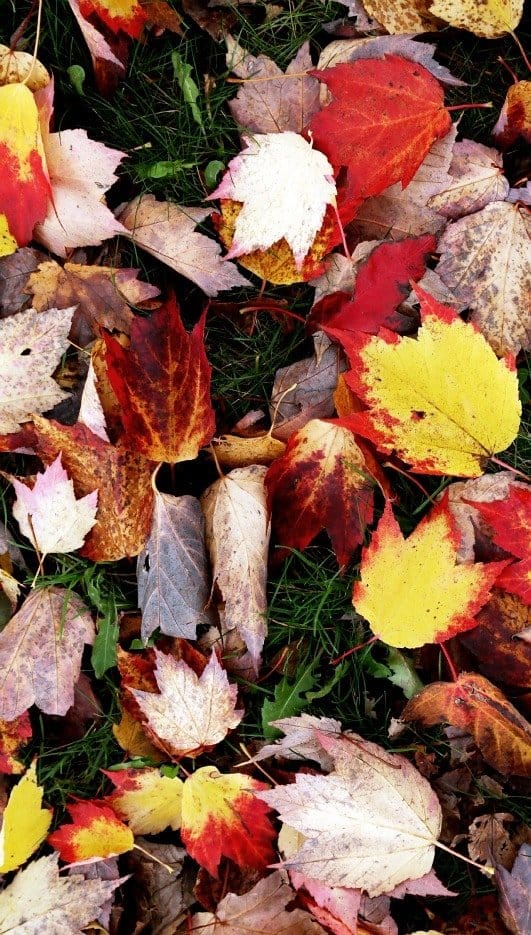
With all my prattling on about saving leaves and covering every square inch of soil with them, you might wonder why I’m leaning toward obsession on this issue. Well, there are new thoughts about possibly overfeeding plants with manufactured or commercially processed fertilizers. When I look at a plant, I want to see health and vigorous growth. But sometimes I forget that plants can achieve those standards by themselves when grown in soil with lots of organic content (like leaves and plant debris) and sufficient moisture. Could it be we’re feeding the wrong appetite, and it’s soil that really needs our attention when providing nutrition, not the plants?
The theory is to feed the soil, and then let the soil feed the plants. The best way to feed soil is to add leaves (dug in or as mulch), which are then processed by soil organisms and turned into ideal forms of plant nutrients. Simple as that. Of course, we can choose to provide commercial fertilizers in focused and limited amounts, for instance, to feed the lawn in autumn and rose shrubs in spring and early summer. But the main meal for plants should come from soil that’s been fed with organic material.
I’m taking a distance-learning course in urban agriculture at University of Guelph, and there’s been much to read about soils, nutrients and plant growth. Information can change the way we think and garden. If you want to know more about how the soil functions to feed plants, there is a good book for home gardeners, Teaming With Microbes: The Organic Gardener’s Guide to the Soil Food Web, by Jeff Lowenfels and Wayne Lewis (Timber Press 2010). This is a valuable and useful book for all types of gardeners.
Other posts by Judith this week:
Posts by Judith last week:

Hi Vera,
What an excellent use for those bags of leaves! Not only will plants feed and grow better, the soil will also develop a soft and friable texture (sometimes called tilth) that plant roots love to grow through. You’ve really got a good process going there!
— Judith
Judith, I am in total agreement with feeding the soil. Our Winnipeg summer was hot and dry, and in August I wanted to place a mulch cover as well as work nutrients back into the soil. I had at least 8 leftover bags of dried leaves I collected from the previous year, gathered to use as browns in my compost, and spread the leaves over my garden. After I spread the leaves over the garden, I lightly worked the leaves into the soil and then applied light watering to keep the leaves from blowing away. The process worked great, and I have plans to apply the same process for next year. Here’s to cheap mulch, and bonus ‘nutrients’.
Hi Gwen,
I’m glad to know people are talking about mycorrhizal fungi, an important key to making soil fertility available to plants. I know you can easily buy Myke products to inoculate garden soil with these fungi that facilitate roots in absorbing nutrients.
Untilled soils that have benefited from years of leaf mulch are likely to have mycorrhizae already growing in the root zone. It’s important to know that tilling and turning the soil break up the mycorrizal threads and sets them back. Soil that remains undisturbed is where the fungi proliferate best. For gardeners, that means don’t over-dig, don’t till and don’t disturb soil without having a reason. Build a layer of organic material (leaves) from the top every year, and let it compost in place.
Thanks for commenting on this important information!
— Judith
Judith, feeding the soil naturally is a good idea. Toronto Master Gardeners had a speaker who recommended the use of Mycorrhizal fungi. According to John Renaud, Ontario has enough phosphorus in the soil that we don’t need to add it, but we need those microscopic assistant to release it for us.
I would consider the urban agriculture course at Guelph also, having received notice of it while taking my required Hort courses for MG status. Would love to hear what excites you in these studies.